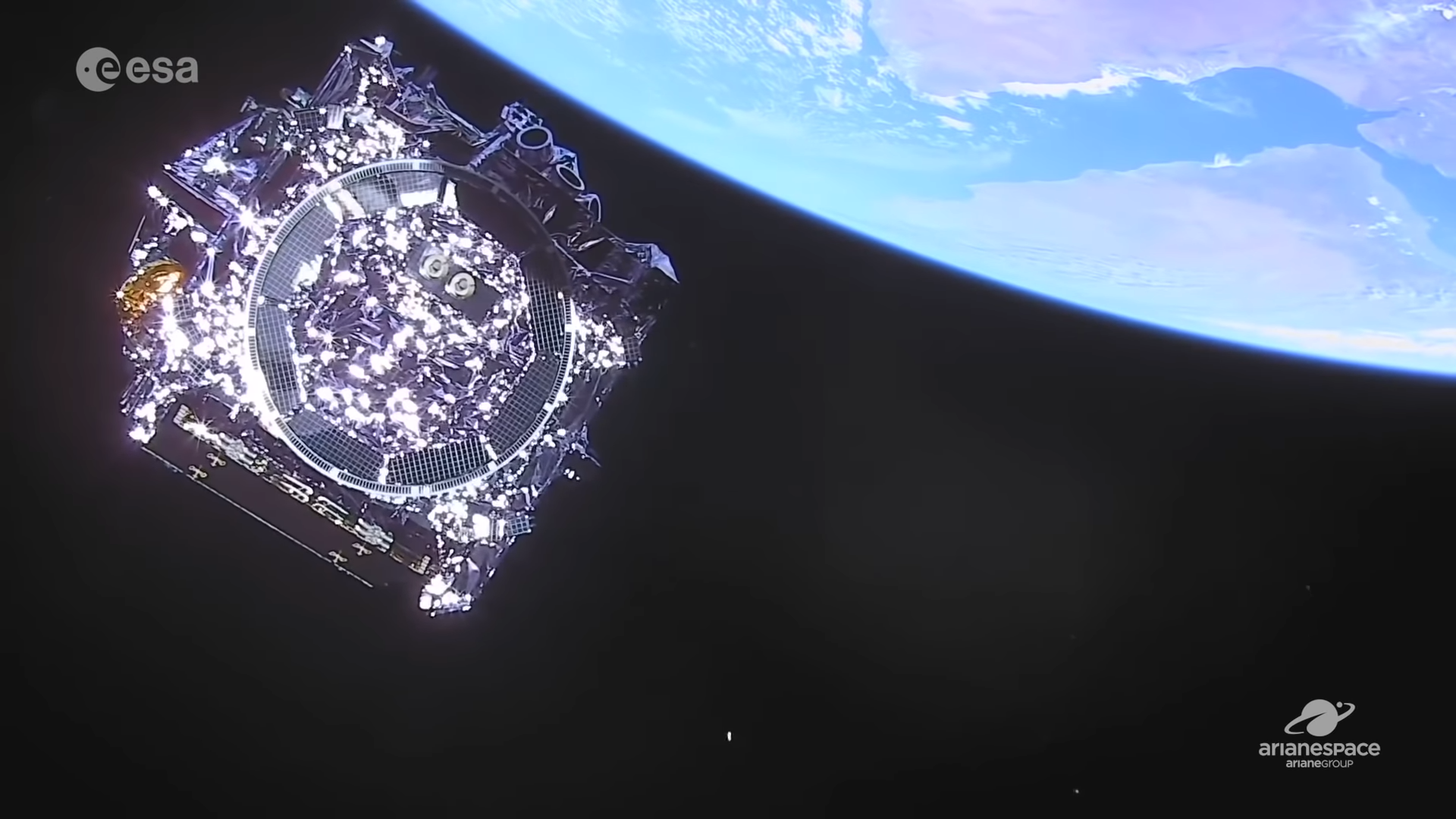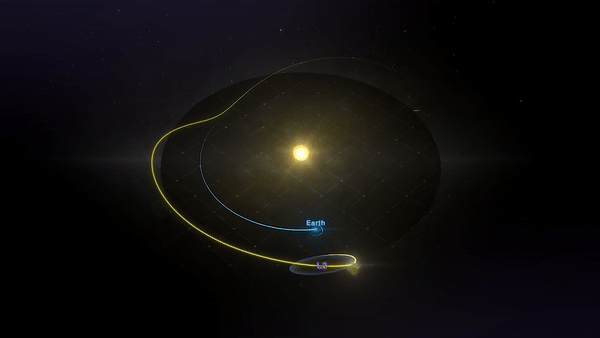This amazing HD video is the last view we'll ever have of the James Webb Space Telescope
The newly released HD video shows the observatory flying away from its rocket toward deep space.
When the James Webb Space Telescope's mission first began on Dec. 25, it was already time for people on Earth to say goodbye to the observatory.
A new video from the European Space Agency shows the $10 billion James Webb Space Telescope deploying from the Ariane 5 rocket that carried it into space, all in glorious ultra-HD resolution. In just three minutes, you'll see Webb slowly floating away from its rocket stage and unfurling its solar panels.
The separation marked the first major stage in Webb's month-long journey to a stable gravitational area called sun-Earth Lagrange Point 2 (L2), which allows the spacecraft to "park" using minimal fuel.
Unlike the Hubble Space Telescope, Webb is not designed to be serviced by astronauts in space. The telescope will rely on infrared observations, which requires it to be far away from Earth (some 930,000 miles, or 1.5 million kilometers) to minimize stray light from interfering with its work.
Live updates: NASA's James Webb Space Telescope mission
Related: How the James Webb Space Telescope works in pictures
Webb's one-way journey to L2 will thus allow it to perform work in studying the early universe, among other items. Along the way to its distant destination, Webb nearly flawlessly completed the first major stage of deployment Tuesday (Jan. 4), which was opening and tensioning its sunshield as a further measure to protect its infrared work. Then on Wednesday the telescope successfully deployed its secondary mirror.
NASA has an approximate deployment schedule in mind as it gets Webb ready for work, but the schedule has flexibility since it is dependent on ground commands. That allows engineers to make pauses or adjustments as required to work out anything unexpected, such as a couple of minor issues Webb encountered just before sunshield tensioning that were quickly resolved.
Breaking space news, the latest updates on rocket launches, skywatching events and more!
Getting the observatory ready for work will take at least six more months, and includes other major items such as getting the mirrors aligned. Webb will then perform a set of test observations and early science as it completes its commissioning work later this year, although the first few targets have not yet been revealed.
Correction: An earlier version of this story stated the ESA video of the James Webb Space Telescope's separation was in 4K resolution. It is in standard HD resolution.
Follow Elizabeth Howell on Twitter @howellspace. Follow us on Twitter @Spacedotcom and on Facebook.

Elizabeth Howell (she/her), Ph.D., was a staff writer in the spaceflight channel between 2022 and 2024 specializing in Canadian space news. She was contributing writer for Space.com for 10 years from 2012 to 2024. Elizabeth's reporting includes multiple exclusives with the White House, leading world coverage about a lost-and-found space tomato on the International Space Station, witnessing five human spaceflight launches on two continents, flying parabolic, working inside a spacesuit, and participating in a simulated Mars mission. Her latest book, "Why Am I Taller?" (ECW Press, 2022) is co-written with astronaut Dave Williams.


